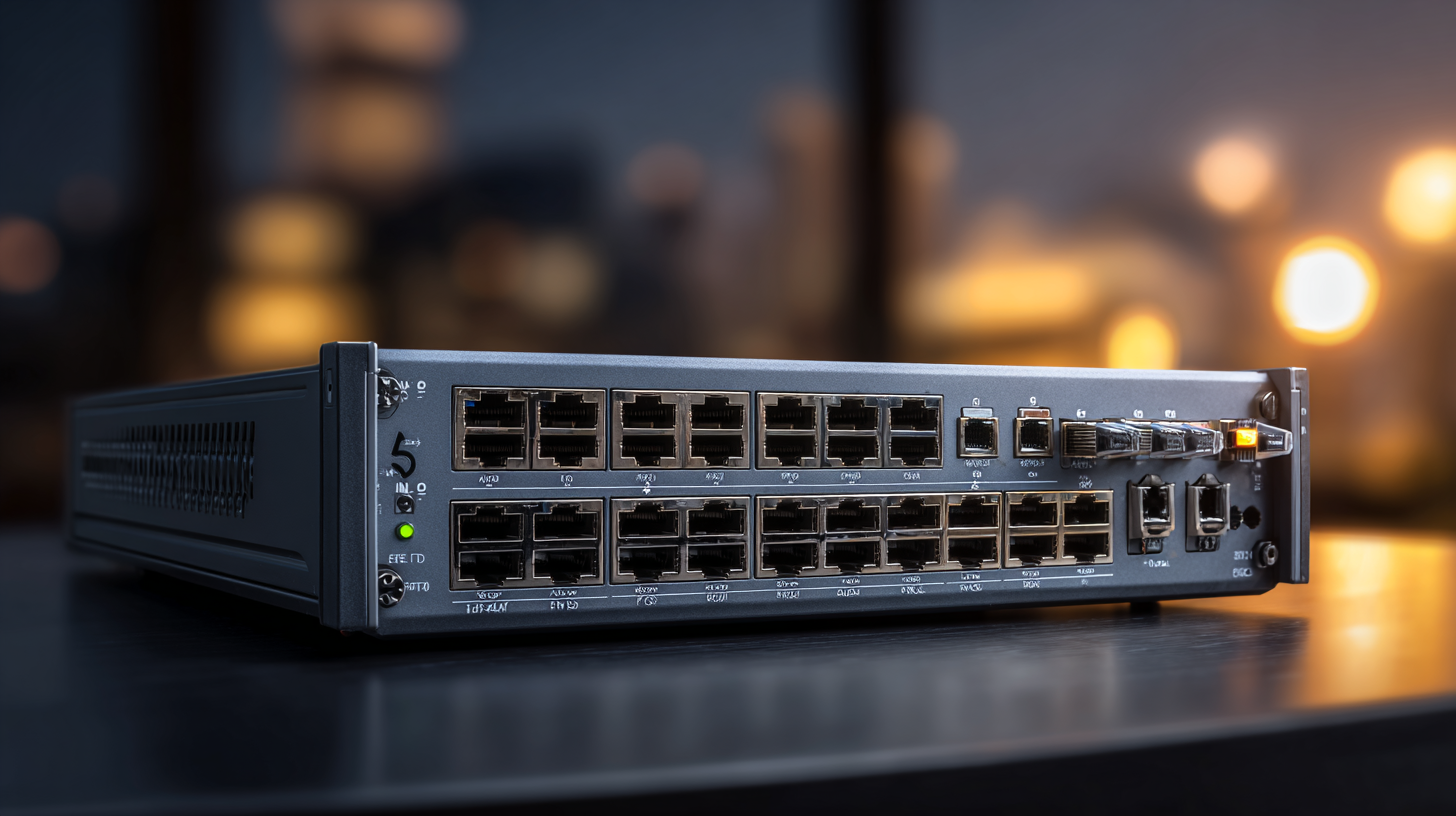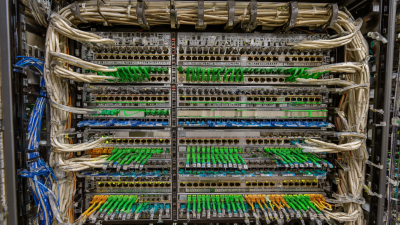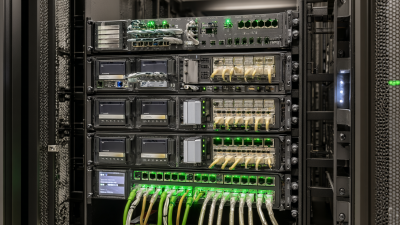In today's increasingly digital landscape, the need for robust cybersecurity measures has never been more critical. The Juniper SRX Firewall stands out as an essential tool for organizations seeking to safeguard their networks against an array of cyber threats. However, merely deploying the Juniper SRX Firewall is not enough to ensure comprehensive protection; optimizing its configuration and performance is crucial for achieving ultimate security.

This guide delves into five key strategies that can significantly enhance the effectiveness of your Juniper SRX Firewall. From fine-tuning security policies to leveraging advanced threat intelligence, these actionable steps will empower you to maximize the protective capabilities of your firewall. Join us as we explore how to unlock the full potential of your Juniper SRX Firewall and secure your network against evolving threats.
In today's digital landscape, optimizing firewalls is imperative for robust cybersecurity. According to a report by Gartner, nearly 80% of organizations have faced firewall-related security incidents that could have been prevented with proper optimization. This highlights the critical need for a well-configured Juniper SRX firewall, which can serve as a first line of defense against emerging threats. By prioritizing optimization, organizations can significantly reduce their exposure to vulnerabilities that increasingly sophisticated cybercriminals exploit.
Effective firewall optimization involves more than just setting rules; it requires continuous monitoring and adjustments to adapt to the evolving threat landscape. A study by Forrester Research indicates that businesses that implemented proactive firewall management saw a 30% reduction in security breaches within the first year. This demonstrates how strategic enhancements, such as fine-tuning access controls and utilizing advanced intrusion prevention systems, can lead to improved security postures. As the frequency of attacks escalates, prioritizing firewall optimization is not merely a best practice but a necessity for maintaining the integrity of crucial data and systems.
| Strategy | Description | Benefits | Implementation Steps |
|---|---|---|---|
| Regular Firmware Updates | Ensure the firewall is running the latest firmware to protect against vulnerabilities. | Enhanced security and performance, reduced risk of breaches. | 1. Monitor for updates 2. Schedule update windows 3. Apply updates and verify functionality |
| Implement Advanced Threat Protection | Utilize advanced threat detection and prevention tools to identify and mitigate threats. | Real-time threat detection, reduced impact of attacks. | 1. Research threat protection options 2. Configure settings 3. Monitor and adjust based on alerts |
| Optimize Security Policies | Review and refine rules to ensure they're effective and not overly permissive. | Improved security posture, better resource management. | 1. Audit existing policies 2. Identify gaps and overlaps 3. Revise and test policies |
| Utilize Logging and Monitoring | Set up comprehensive logging and monitoring to track firewall activity. | Increased visibility, faster incident response. | 1. Configure logging settings 2. Implement monitoring tools 3. Review logs regularly |
| Conduct Regular Security Audits | Periodically assess the firewall and network security through audits. | Identify vulnerabilities, validate security measures. | 1. Schedule audits 2. Engage a security professional 3. Review and act on findings |
Configuring your Juniper SRX firewall effectively is critical for enhancing security in a rapidly evolving threat landscape. According to a report by the Ponemon Institute, 64% of organizations experienced a cyberattack in the past year, highlighting the necessity for robust firewall settings. One key configuration setting is enabling intrusion prevention systems (IPS) to detect and block malicious traffic. This feature is essential, as a study by Gartner indicates that organizations using advanced firewall configurations can decrease breach costs by up to 30%.
Additionally, optimizing security policies based on user roles can significantly reduce risks. A McKinsey report emphasizes that 70% of successful data breaches stem from compromised insider credentials. By implementing role-based access control (RBAC) and ensuring that only necessary permissions are assigned, SRX firewalls can better safeguard sensitive data and minimize potential exposure. Moreover, regularly updating firmware and reviewing logs can help in identifying potential vulnerabilities and responding promptly, ensuring a resilient security posture against evolving threats.
 Keeping your Juniper SRX firewall updated with the latest software versions and patches is crucial for maintaining a robust security posture. Regular software updates can address vulnerabilities that cybercriminals actively exploit. By implementing a consistent patch management routine, network administrators can ensure that their firewalls are not only protected against known threats but also optimized for performance. This proactive approach significantly reduces the risk of breaches, as it closes security gaps before they can be exploited.
Keeping your Juniper SRX firewall updated with the latest software versions and patches is crucial for maintaining a robust security posture. Regular software updates can address vulnerabilities that cybercriminals actively exploit. By implementing a consistent patch management routine, network administrators can ensure that their firewalls are not only protected against known threats but also optimized for performance. This proactive approach significantly reduces the risk of breaches, as it closes security gaps before they can be exploited.
Moreover, staying current with the latest releases from Juniper offers additional benefits beyond mere security. New updates often come with performance enhancements, feature improvements, and compatibility upgrades that can help streamline network operations. By prioritizing software updates and patching practices, organizations can leverage these advancements to fortify their defenses and make the most of their investment in Juniper SRX technology. Regular updates also foster compliance with industry regulations, further reinforcing the importance of a diligent patch management strategy.
When it comes to securing network infrastructures, utilizing advanced threat prevention techniques on Juniper SRX firewalls can significantly enhance an organization’s defense against increasingly sophisticated cyber threats. According to a recent report by Gartner, organizations adopting next-gen firewalls with integrated threat intelligence and prevention capabilities experienced a 50% reduction in successful attacks. Juniper SRX firewalls, known for their performance and scalability, offer features such as intrusion prevention systems (IPS) and integrated advanced malware protection, which are essential for mitigating risks from both external and internal threats.
Moreover, the deployment of automated threat detection tools is crucial in today’s fast-paced cybersecurity environment. A study by Forrester indicates that automated responses to detected anomalies can reduce incident response times by up to 65%. By leveraging the SRX's capabilities in conjunction with machine learning and analytics, businesses can proactively identify and respond to potential threats before they escalate. Integrating these advanced threat prevention techniques not only fortifies the firewall’s foundational policies but also ensures a dynamic security posture that adapts to evolving threat landscapes.
When it comes to ensuring the security of your network infrastructure, proper monitoring and logging of your Juniper SRX firewall activities are paramount. By implementing a robust monitoring strategy, you can gain invaluable insights into traffic patterns, detect anomalies, and respond to potential threats proactively. Begin by configuring log parameters to capture relevant events, such as traffic flows, user authentications, and system changes. Regularly reviewing these logs can help identify suspicious behavior, enabling you to take corrective action before minor issues escalate into significant breaches.

In addition to real-time monitoring, utilizing a centralized logging solution can enhance your visibility. By aggregating logs from multiple SRX devices, you can perform comprehensive analysis and correlate events across your network. Consider incorporating tools like Juniper’s Security Information and Event Management (SIEM) systems, which can automate data collection and provide advanced analytics. Establishing alerts for critical security events will also ensure that your team can swiftly address potential threats while maintaining compliance with regulatory requirements. By adopting these best practices in monitoring and logging, you are laying the groundwork for a more secure and resilient network environment.








